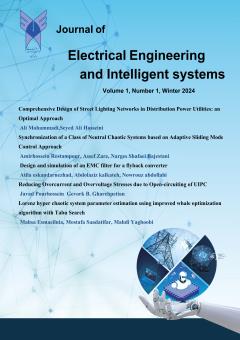-
-
List of Articles
-
Open Access Article
1 - Comprehensive Design of Street Lighting Networks in Distribution Power Utilities: an Optimal Approach
Ali Mohammadi Seyed Ali Hosseini -
Open Access Article
2 - Synchronization of a Class of Neutral Chaotic Systems based on Adaptive Sliding Mode Control Approach
amirhosein rostamPour Assef Zare Narges Shafaei -
Open Access Article
3 - Design and simulation of an EMC filter for a flyback converter
atila eskandarnezhad عبدالعزیز کلته Nowruz Abdollahi -
Open Access Article
4 - Reducing Overcurrent and Overvoltage Stresses due to Open-circuiting of UIPC
Javad Pourhossein Gevork B. Gharehpetian -
Open Access Article
5 - Lorenz hyper chaotic system parameter estimation using improved whale optimization algorithm with Tabu Search
Mahsa Esmaeilnia Mostafa Saadatifar Mahdi Yaghoobi
-
The rights to this website are owned by the Raimag Press Management System.
Copyright © 2021-2025







